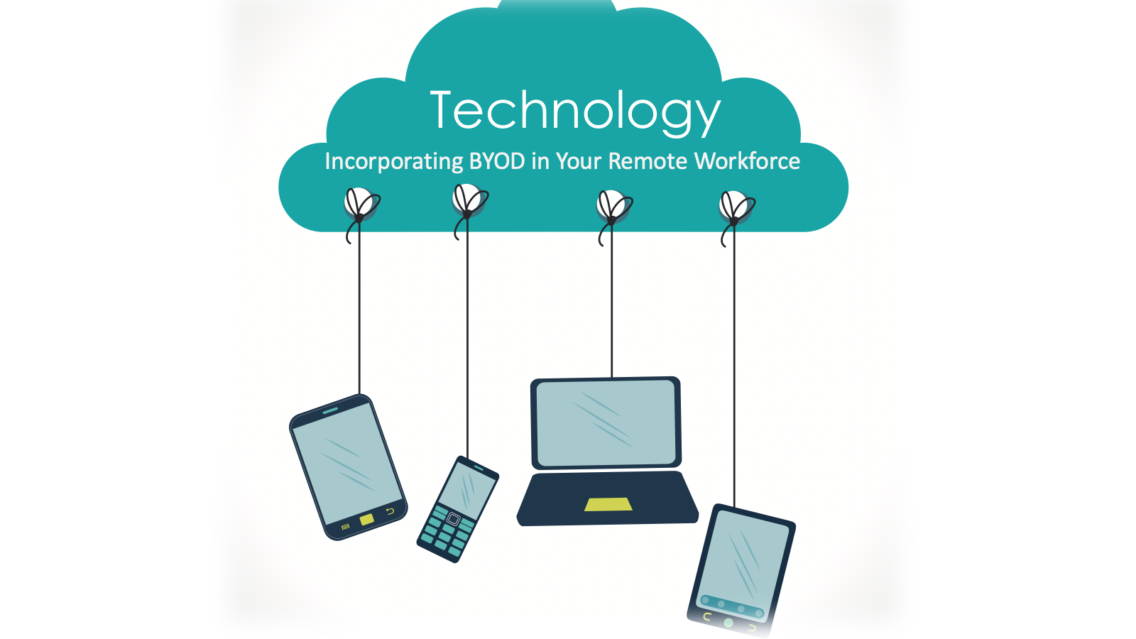There has been a major shift towards BYOD (bring your own device) especially from nonessential workers after the start of the pandemic in order to stay working. By the end of 2020, we will see even higher adoption rates than today – whether out of necessity for enabling remote work, or simply for BYOD’s many benefits, including enhanced mobility, efficiency, and employee satisfaction. For BYOD in a remote workforce to be effective in your organization it is important to understand what is BYOD, why BYOD is important, the benefits of BYOD for both employee and employer, the security needed and how it is changing your workplace culture.
BYOD for Remote Workforce
What is BYOD?
It allows employee-owned devices to be used within your organization. Mobile phones are the most common employee owned device, but employees also use their personally owned tablets, laptops, or other home devices for work.
Why is BYOD important now?
BYOD is a part of the rising trend of IT consumerization but has seen a larger increase as organizations scrambled to work remotely amidst Covid-19. Organizations that allowed their remote workforce to use their own devices enabled those employees to bridge the wide communication gap created by abruptly working outside the office. As organizations facilitate BYOD initiatives and policies, they can reach all their employees, provide flexibility, and limit training for unfamiliar devices.
Benefits of BYOD
Benefits for the Employer
Having a employee owned device program and policy in place creates many benefits for the organization. It increases employee engagement and breaks down communication barriers. Most importantly it helps organizations build a compliant, regulated and well-managed mobile program, reducing the risk of security breaches. Also, there is a financial benefit, decreasing the cost spent on hardware. According to an article on Staffbase.com organizations will save an average of $1,097 per employee by incorporating BYOD in the workforce.
Benefits for the Employee
Employees are familiar with their own devices and typically have the most up to date technology, resulting in faster completed tasks. BYOD can also be easily integrated into their new work from home environment, enabling greater work–life balance and higher productivity.
BYOD Risks and Security
What are the risks?
When implementing a BYOD strategy, it is critical to have security at top of mind. From data leakage, lack of management, unsecure apps, and more; devices that aren’t properly secured or managed can leave the organization’s system vulnerable. Devices that are not part of your organization’s IT infrastructure are not protected by company firewalls and security systems. That is why it is crucial to create a strategy with security as a focus.
How do you secure bring your own device?
Although bring your own device creates flexibility for organizations it brings security challenges if policies and controls are not already in place. Below is a key list of ways to properly put security measures into place for an effective and secure strategy.
- Establish Security Policies
- Define Use Guidelines
- Multi-factor Authentication
- Cybersecurity Assessments
- Use Mobile Device Management Software
- Communicate Policies
- End User Security Training
Supporting the Changing Workforce Culture
With flexibility in BYOD and mobile devices, organizations need a strong security plan as well as policy in place. The remote workforce is utilizing more tools that provide anytime, anywhere access from having visibility into file sharing apps, mobile enterprise messaging tools, and cloud-based software. Mobile devices and BYOD supports the anytime, anywhere access that is demanded in the evolving workforce.
By 2022 the global BYOD market will exceed $350 billion. As BYOD matures, it is important for organizations to adopt formalized policies, resources, security measures and management methods to adapt to this change. Not only does bring your own device create more flexibility and productivity in the workforce, but it is supporting necessary changes in workplace culture. With the proper IT management in place, BYOD delivers a robust solution for organizations facing new challenges from the increasingly remote workforce.
For more information on how you can incorporate employee owned devices into your organization securely and effectively manage them contact us to discuss your best options.
